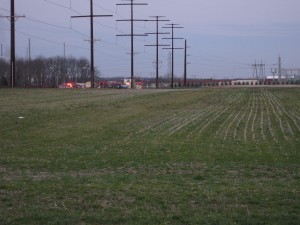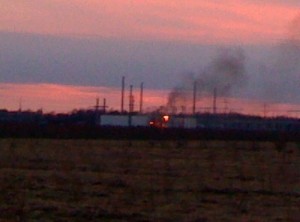It’s official – Susquehanna-Roseland is delayed
January 8th, 2010
It’s official, well, semi-official, there’s still no word from the Board of Public Utilities itself!
Here’s PSEG’s objection and their missive asking that the time to respond to Commissioner Fiordaliso’s request for comment be cut short:
Dig the last paragraph:
Accordingly, PSE&G respectfully requests that the Board shorten the time to comment from January 16 to January 12 and further requests that the Commission act on the evidence before it and approve the Petition on January 15 without further delay.
Oh, right, yes, ma’am, we’ll get right to it! They must be dreaming…
And as if that weren’t funny enough, here’s the PSEG argument against oral argument:
… but here it is in B&W:
BPU delays decision on power line
Susquehanna-Roseland Reply Briefs!
January 7th, 2010
Susquehanna-Roseland Reply Briefs were due yesterday — I’m representing Stop the Lines.
So it’s nap time today…
Here they are!
STL – Certification & Exhibits
Municipal Intervenors Reply Brief
Environmental Intervenors Reply Brief
Environmental Intervenors – Certification
Environmental Intervenors – Exhibits
Montville Board of Education Reply Brief
Hmmmmmmmmm… I don’t see anything from Exelon…
Happy reading! Dig some of the exhibits, like the Motion to Withdraw from PATH-VA, the PJM 2010 Load Forecast (which shows demand has been down down down since the peak of 2006), and the sensitivity analysis that shot down PATH in Virginia!
PATH transmission withdraws application
December 23rd, 2009
They’re withdrawing their application, saying they want them timed together — if so, why withdraw, and not just ask for suspension? “It keeps the blood flowing” they say, but I’d say it keeps the blood boiling. Why not just admit it — it’s not needed, and there’s no way they can prove, and now they tacitly admit they can’t even CLAIM it’s needed.
A decent article from the Leesburg Journal:
PATH Seeks To Withdraw, Suspend Richmond Hearings
By Margaret Morton
(Created: Tuesday, December 22, 2009 7:48 PM EST)
FIRE! ACE’s Orchard substation is on fire!
December 14th, 2009
“HOT” off the press from Stop the Poles! The Atlantic City Electric substation in southern New Jersy went up in flames today.
And as to the article below, keep in mind that this is one big honkin’ substation — “distribution” — I don’t think so…
How does a substation burn?!?!?!?!?! Apparently it’s the plastic wall around it that’s on fire, the “sound” wall, but how could that be? How could that burn? And I’ve heard that emergency crews can’t get near it,they’re on the scene, but aren’t allowed to get close. That’s them banded together to the left of the line, and that’s the substation on the left. Must be pretty intense toxic emissions?!?!?!
Here’s another photo:
Fire reported at Atlantic City Electric Co.’s Orchard Substation in Upper Pittsgrove
By Today’s Sunbeam
December 14, 2009, 4:36PMSeveral Salem County fire companies have been called to the scene.
Heavy smoke to could be seen in the area.
The cause of the fire is still unknown.
The new station is part of Atlantic City Electric’s power distribution network in South Jersey.
Susquehanna-Roseland hearing
November 20th, 2009
It’s warm here in New Jersey, unseasonably. We’re slogging through the hearing.
The good news is that we’ve gotten pretty much everything in the record that we need, including, well not quite, got the 2Q State of Market, and last night I found that the 3Q was released November 13:
(great, can’t upload here, grrrrrrrrrr)
Page 9 will tell you all about decreased peak demand:
2005 133,761
2006 144,544
2007 139,428
2008 129,481
2009 126,805
Down 2,676 MW this year, down 9947 from 2007 to 2008. Down every year since 2006!
Here’s a report of yesterday’s festivities:
State told power plan pros, cons
By SETH AUGENSTEIN
saugenstein@njherald.comFour attorneys cross-examined the experts, with few breaks.
“I would appreciate it if you would just ask a question,” he said.
The opposition attorneys said they were getting the job done.
“We got on the record what we wanted on the record,” Tamasik said.


